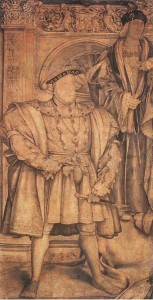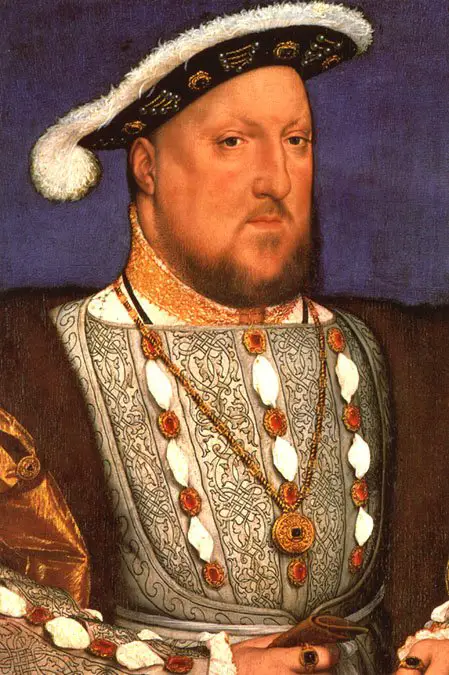
On this day in history, in the early hours of 28 January 1547, fifty-five year-old Henry VIII died at Whitehall Palace.
Archbishop Thomas Cranmer was at the King’s side when he died, although Henry had lost the power of speech by the time her arrived. Cranmer asked Henry to give him some sign that he trusted in God and Henry “holding him with his hand, did wring his hand in his as hard as he could” and then he slipped away. He had reigned for over 37 years.
His nine-year old son, who was now King Edward VI, was informed of his father’s death by Edward Seymour and Anthony Denny on 29 January and was proclaimed king on 31 January. Edward was crowned king on 20 February 1547 at Westminster Abbey.
You can read all about Henry VIII’s last days, his burial and his will in my article 28 January 1547 – Henry VIII Dies, but for now I’ll leave you with historian David Starkey’s words on the paradox that is Henry VIII – the “virtuous prince” and “hulking tyrant”:
“Holbein’s Henry is the king of his last dozen or so years, when he was – in Charles Dickens’s glorious phrase – a spot of blood and grease on the history of England. This is the hulking tyrant with a face like Humpty Dumpty of nightmare, who broke with Rome and made himself supreme head of the church; who married six wives, of whom he divorced two and divorced and executed two others; who dissolved six hundred monasteries; demolished most of them and shattered the religious pieties and practices of a thousand years; who beheaded nobles and ministers, including those who had been his closest friends, castrated, disembowelled and quartered rebels and traitors, boiled poisoners and burned heretics.
This is also the king who reinvented England; presided over the remaking of English as a language and literature and began to turn the English Channel into the widest strip of water in the world. He carried the powers of the English monarchy to their peak.”
I highly recommend Starkey’s Henry: Virtuous Prince, which looks at Henry VIII’s early reign and shows a very different side to this iconic king.
Trivia: The iconic image we have of Henry VIII – full length, looking forward, hands on hips, legs astride etc. – is based on Holbein’s cartoon/sketch (shown above) for the Whitehall mural, which was destroyed by fire in 1698. The portrait that is actually by Holbein is this one, which is on display in Madrid’s Thyssen-Bornemisza Museum:

Notes and Sources
- Henry: Virtuous Prince, David Starkey
- Detail from the cartoon of Henry VIII – http://commons.wikimedia.org/wiki/File:Henry_VIII_and_Henry_VII,_by_Hans_Holbein_the_Younger.jpg